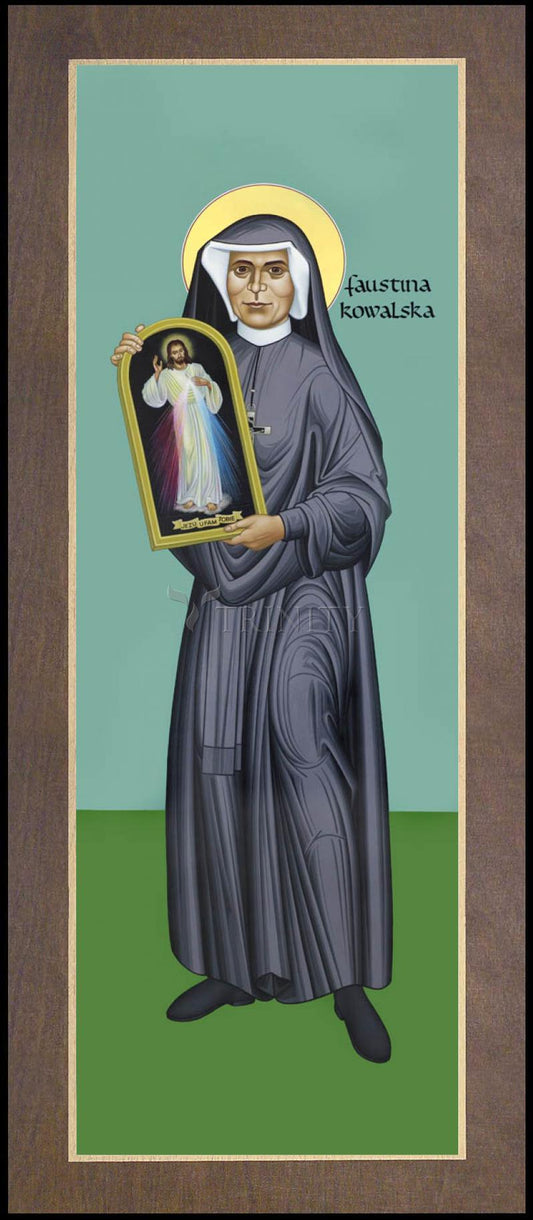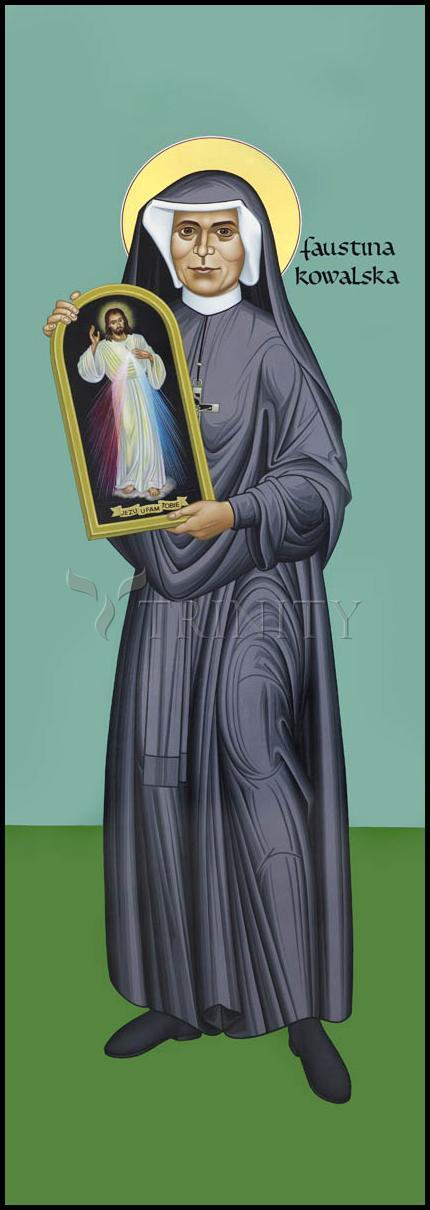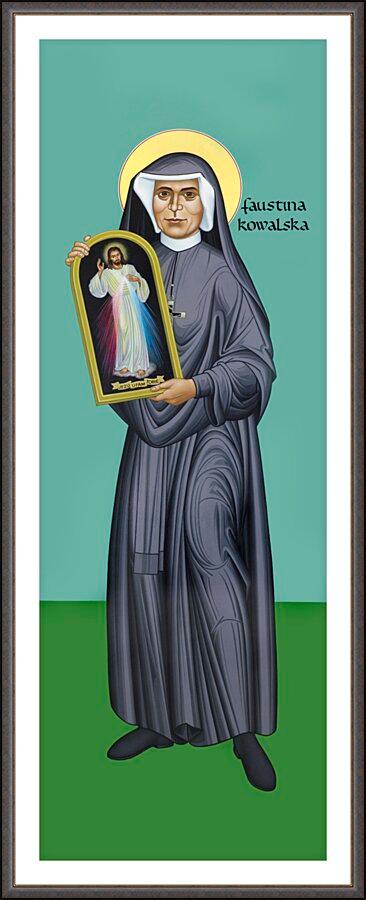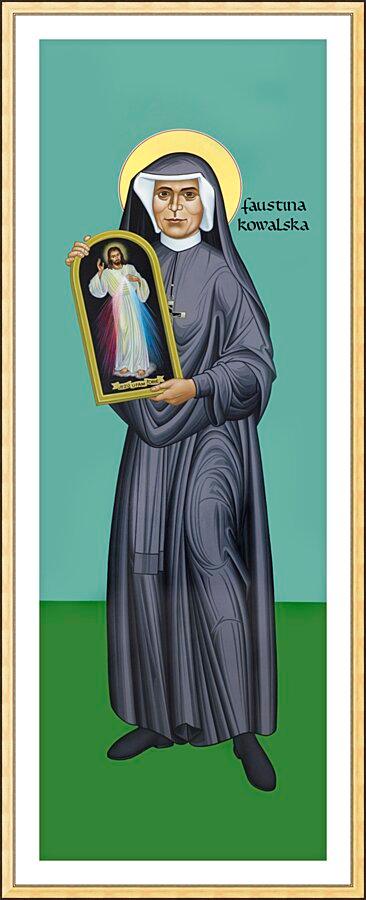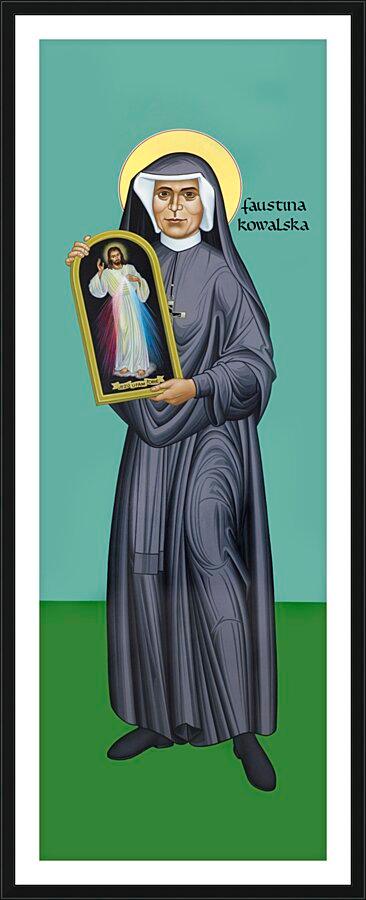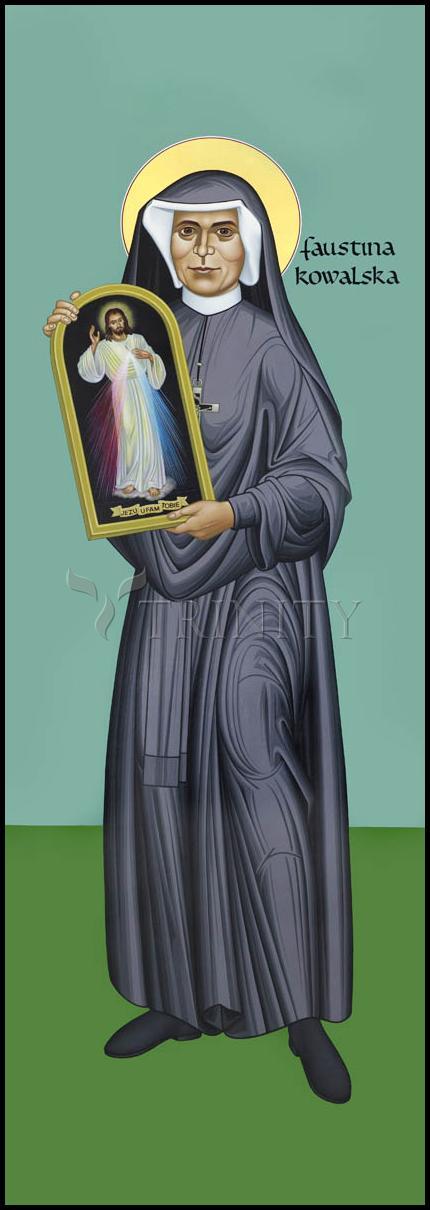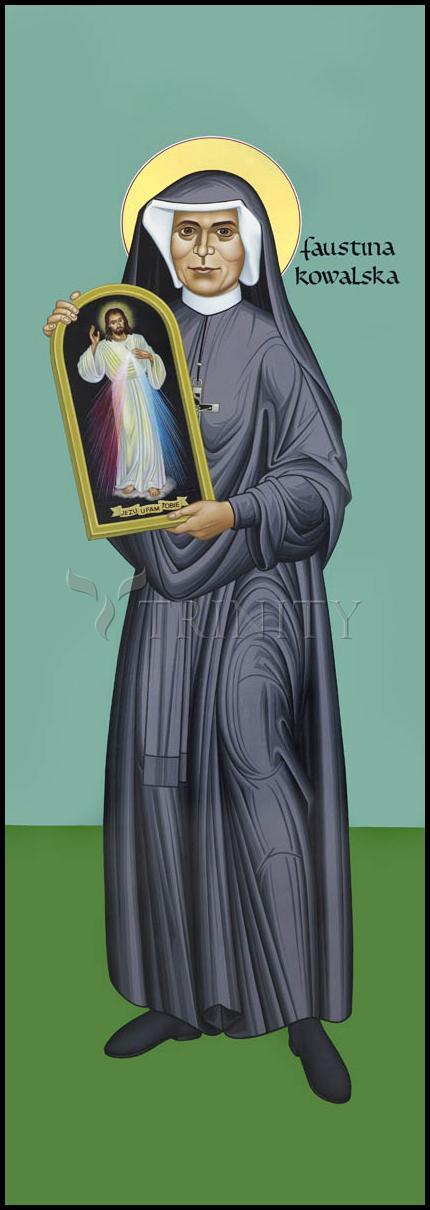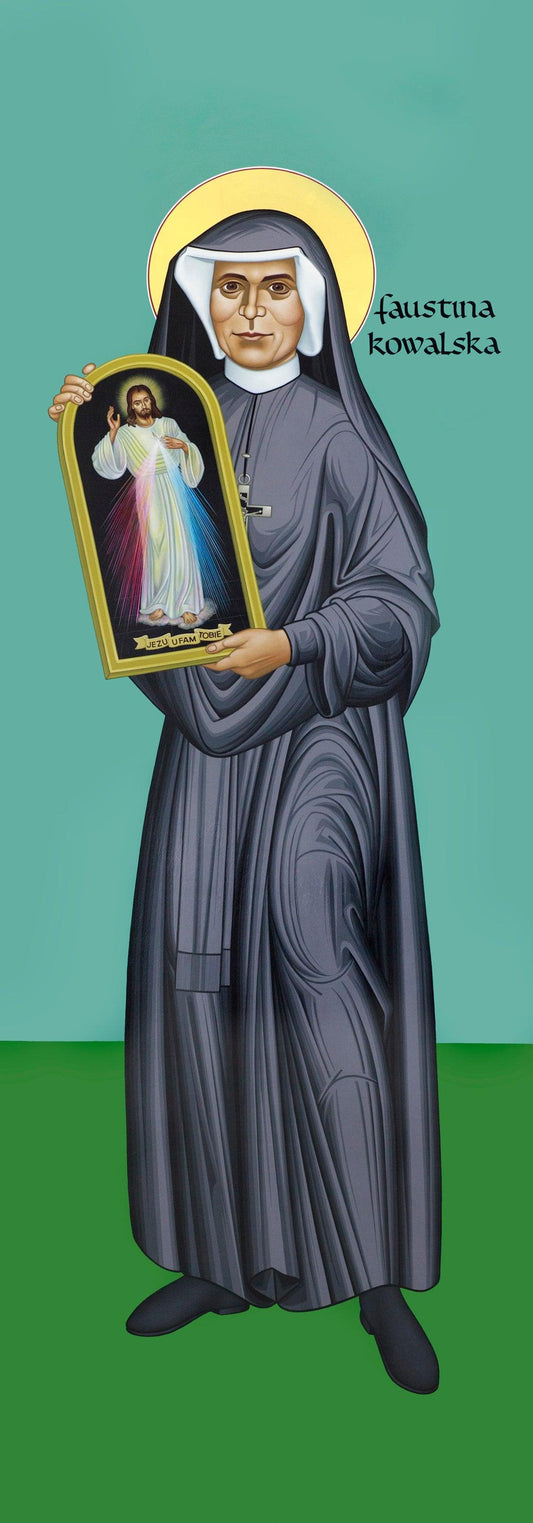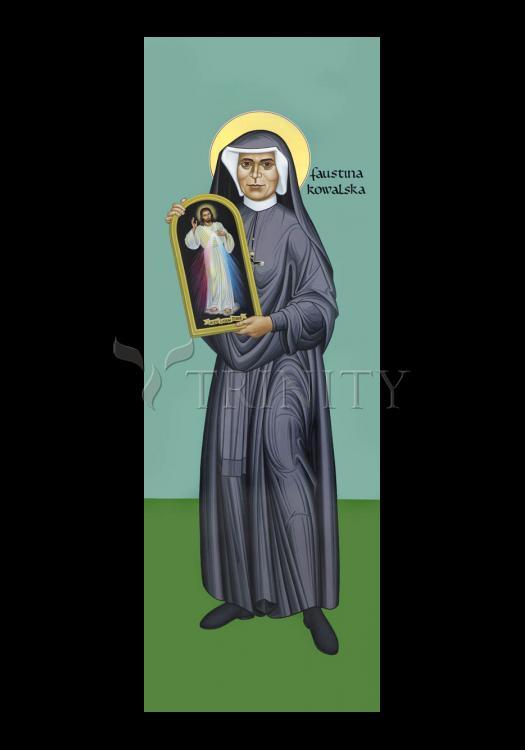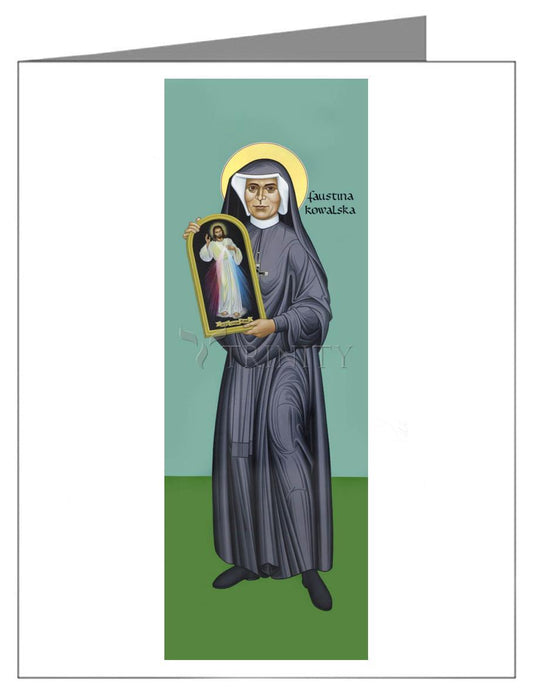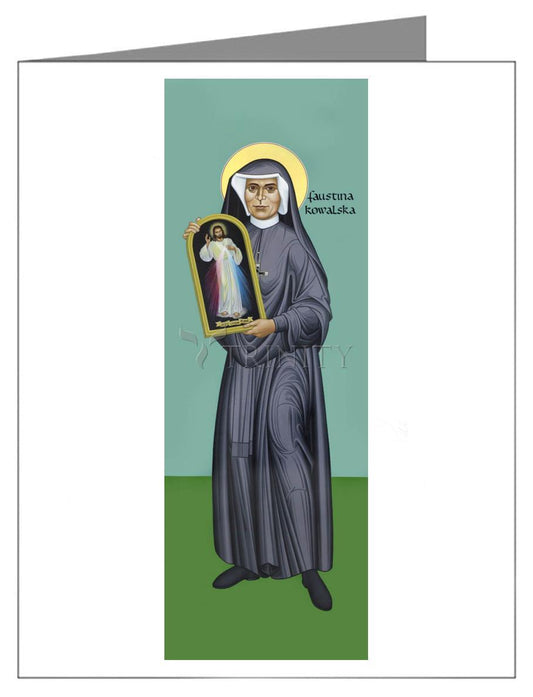Third of ten children, she attended only three years of school. As a teenager, she worked as a domestic servant for other families. After being rejected by several religious orders, she became a nun in the Congregation of the Sisters of Our Lady of Mercy in Warsaw, Poland on 1 August 1925. The Congregation is devoted to care and education of troubled young women. She changed her name to Sister Maria Faustina of the Most Blessed Sacrament. During her 13 years in various houses, she was a cook, gardener, and porter.
She had a special devotion to Mary Immaculate, to the Sacrament, and to Reconciliation, which led to a deep mystical interior life. She began to have visions, receive revelations, and experience hidden stigmata. She began recording these mystical experiences in a diary; being nearly illiterate, it was written phonetically, without quotation marks or punctuation, and is almost 700 pages. A bad translation reached Rome in 1958, and was labeled heretical. However, when Karol Wojtyla (Pope John Paul II) became Archbishop of Krakow, he was besieged by requests for a reconsideration. He ordered a better translation made, and Vatican authorities realized that instead of heresy, the work proclaimed God's love. It was published as Divine Mercy in my Soul.
In the 1930's, Sister Faustina received a message of mercy from Jesus that she was told to spread throughout the world, a message of God's mercy to each person individually, and for humanity as a whole. Jesus asked that a picture be painted of him with the inscription: "Jesus, I Trust in You." She was asked to be a model of mercy to others, to live her entire life, in imitation of Christ's, as a sacrifice. She commissioned this painting in 1935, showing a red and a white light shining from Christ's Sacred Heart.
Apostles of Divine Mercy is a movement of priests, religious, and lay people inspired by Faustina's experiences; they spread knowledge of the mystery of Divine Mercy, and invoke God's mercy on sinners. Approved in 1996 by the Archdiocese of Krakow, it has spread to 29 countries.
Born: August 25, 1905 at Glogowiec, Poland as Elena (Helena) Kowalska
Died: October 5, 1938 at Krakow, Poland of tuberculosis
Venerated: March 7, 1992 by Pope John Paul II
Beatified: April 18, 1993 by Pope John Paul II
Her beatification miracle involved the cure of Maureen Digan who suffered Milroy's disease, a hereditary form of lymphedema that cost her a leg.
Canonized: April 3, 2000 by Pope John Paul II
Her canonization miracle involved the cure of Father Ronald P. Pytel's heart condition.



